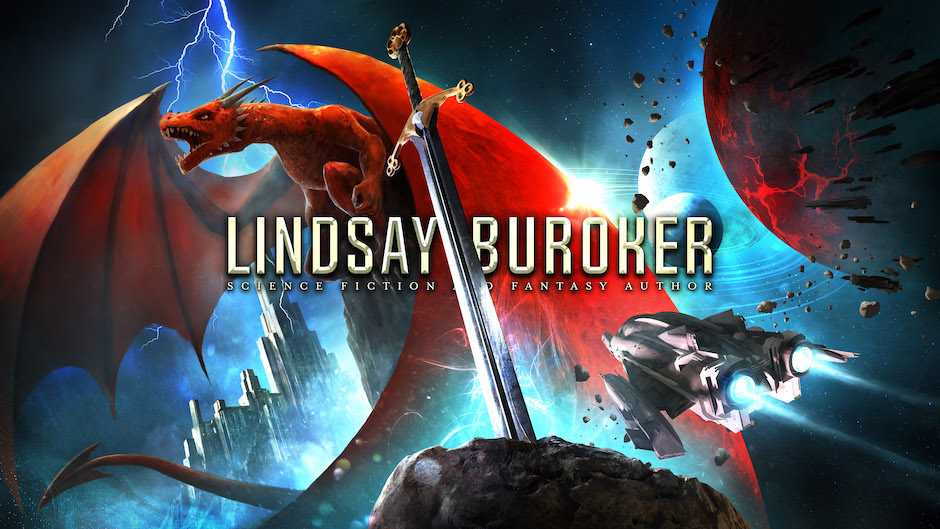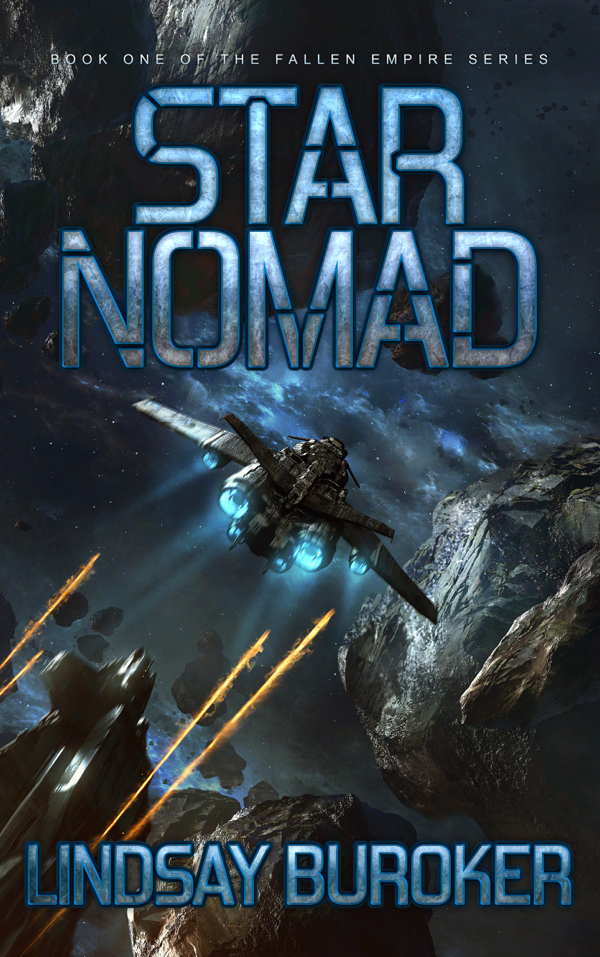 I’ve had a couple of comments left in the bowels of the blog of late that lead me to think that I should say more about newsletters than, “You should have one.” Okay, my article on How to Start a Newsletter (and why every author should) covers a little more than that, but there are still questions afoot. So, let me see if I can answer a few questions and comments today. We’ll call this the email-marketing-for-authors FAQ.
I’ve had a couple of comments left in the bowels of the blog of late that lead me to think that I should say more about newsletters than, “You should have one.” Okay, my article on How to Start a Newsletter (and why every author should) covers a little more than that, but there are still questions afoot. So, let me see if I can answer a few questions and comments today. We’ll call this the email-marketing-for-authors FAQ.
My book just came out, and I want to email everyone I know, so that they’ll buy it. Should I?
My answer here is going to depend on who “everyone” you know is. Is it 20 or 30 friends and family members that you email on a regular basis? If so, sure, send them a note in case they’re interested in checking out your book, and you might even ask them to forward the message on to people they know who read in that genre.
If “everyone” you know is everyone you just happen to have an email address for, including the 500 people who work in your building, the 745 Facebook friends that you’ve never talked to, and basically everyone you’ve ever hit reply to in an email over the last five years, then my answer is no, leave these people alone. They don’t have a real relationship with you and probably don’t give a rat’s petootie about your new book. They might regard your random email as spam. Nobody likes to get spam. If you bug them more than once, they may mulishly decide they’ll never try your book (even if they might have been interested by it if they’d chanced upon it on Amazon).
If you want to engage in email marketing (and there are all sorts of benefits of maintaining a mailing list with your fans’ addresses, the main one being that you can send them a note and let them know when you have a new release out), then you need to start a newsletter.
What exactly do you mean by “newsletter”?
A lot of people seem to think I mean blog-rss-subscription-by-email when I say newsletter (i.e. people fill out a field on your blog and your posts are automatically delivered to their inbox). It’s fine to have this on your site, but this isn’t what I mean. There will be times when you want to email fans directly, and your messages might be for their eyes only (hey, they’ve signed up to be in your inner circle, so it makes sense to give them some special insider stuff).
For example, last month when I released my short story, The Assassin’s Curse, I put it up for 99 cents in the various stores, but I sent a Smashwords coupon to my newsletter subscribers, so they could get it for free if they were interested. A lot of people chose to buy it anyway, to support me as an author, but I’ve definitely had emails from people who mention that money is tight and that they appreciate how affordable my ebooks are, so it’s nice to be able to give away freebies or coupons now and then. Of course, I can’t give every book away free, but I figure it’s good karma to be generous when possible. After all, the folks who sign up for your newsletter are going to be some of your biggest fans, the types of people who tell other people that they have to try your books.
But, I digress… Back to the what-is-a-real-newsletter question.
When I talk of newsletters, I’m talking about a separate mailing list where your readers must “opt in” (choose to sign up of their own accord) in order to belong to it. They are agreeing to receive periodic newsletters from you, and they have the option to unsubscribe at any time. Every email you send should have an unsubscribe link at the bottom (if you join Aweber, Mailchimp, or another of the mailing-list services out there, this will automatically be included in your footers).
Anything else (like you signing people up just because they emailed you once or they commented on your blog) isn’t proper web etiquette and may even be illegal (I’m too lazy to go look up the details of the CAN-SPAM Act, but either way you don’t want to do anything that people could construe as harassment or an irritation).
When you make the leap from writer to published author, you also make the leap from artist to entrepreneur. If you’re trying to sell something, you’ll want to obey all of the rules and etiquette that good businesses follow. The last thing you want to do is alienate potential readers by coming across as a spamming pest.
What you can do is, when responding to reader emails, mention that you have a newsletter they might be interested in signing up for and include a link to that page on your site.
Where can I get a newsletter?
I use Aweber, but it’s mainly because I signed up with them years ago, when I ran several mailing lists for my various websites. I’ve been happy with them, but I don’t generally recommend that service to authors, because of the cost. They charge about $55 a quarter, and most authors won’t need all of the bells and whistles that come with the service (such as the ability to host multiple lists, run auto-responders, and a lot of fancy stats analysis such as click tracking). An exception would be if an author was very popular and saw themselves quickly racking up thousands of newsletter subscribers. (The free services I’m going to mention are only free to a point — after one- or two-thousand subscribers, for example, you have to start paying, and at that point they may become more expensive than Aweber).
Free-to-a-certain-point:
I haven’t tried either of these, but I’ve heard from authors who have, and they seem to be happy. The people I know have small lists and haven’t had to worry about going over the subscriber limit yet.
Why I’m sticking with Aweber
Even though Aweber is pricier when you’re starting out (they don’t have a free trial or free-to-a-point option), I expect to break into the thousands of newsletter subscribers before long (I have about 700 now, and I just started plugging the email list in August — I’m also planning a site re-design where the sign-up form will be more prominent). So, I’d end up paying sooner or later anyway.
Another option?
If you pay for your own web hosting, you might have a mailing list software already installed and accessible from your control panel. I’ve heard of WordPress plug-ins that you can use in conjunction with a list based on your own server. I’m not sure what kinds of features you might have with this option, as I’ve never checked into it for myself, but if you’re the techy type (or know someone who is) it may be worth looking into.
After my newsletter is set up, how do I get people to sign up for it?
The big thing is to let your readers know about it. I was slow to do this myself, but my subscriptions picked up when I started mentioning my newsletter at the ends of my ebooks. These days, in my afterword, I usually mention my website, Twitter, and Facebook links, and also that I have a newsletter that people can check out if they want to be notified when I have new releases, contests, giveaways, etc.
Some people want to jump-start their newsletter-subscriber numbers by hosting contests on their blogs, i.e. everyone who signs up for my newsletter will be entered for a chance to win an Amazon gift certificate! I, uh, possibly did that myself. 😛
The problem with that approach, though, is that you get people signing up who aren’t necessarily fans of your work. They’ll just unsubscribe later on.
The only people you really want to sign on are those who have read your stories and want more of your work. As I mentioned, the best way to get those people is by mentioning your newsletter at the end of the book. I know, I know, if you’re only selling a few books a week, this can feel like a tediously slow way to increase one’s fan-base.
My suggestion? Give some short stories away for free (if you have a series of novels out, you might even try giving the first book away for free — you’ve all seen that I’ve had my first Emperor’s Edge book available for free for a couple of months and it’s helped with newsletter sign-ups and sales of subsequent books in the series). You’ll get more people checking out your work that way, and, if they like it, they’ll come to your site and sign up for your list.
Sneaky internet marketers’ tactic to encourage signups:
When I spoke of free ebooks, I meant to get them out there in the Kindle, B&N, iTunes, etc. stores where lots of people will find them, but you can also use free as an incentive to get readers to sign up for your newsletter. If you stumble across some business’s website, you’ll probably be hit with a pop-up box that says something like, “Sign up for our newsletter and get our free ebook on 7 Ways to Melt Away Your Bellyfat Now!” Believe it or not, that stuff works. And you can use the tactic too (sans the annoying pop-up box, please).
Let’s say someone is a fan of your work, and isn’t that big on signing up for newsletters, but they do visit your blog now and then. You could try giving away an exclusive short story, cut scene, or character interview as a way to entice them to sign up. If your freebie isn’t available anywhere else, then they might be a little more tempted to sign up. (Again, this is going to work best with people who are already readers, so do your best to get your work out there in a lot of places where people can try it, maybe for free.) With a mailing list service, you can set up your first email message so that the free tidbit is included in the body of the email; that way people will get it right away and you don’t have to do anything manually.
I have to admit that I haven’t really used that tactic yet myself, but I did do a blog post last month, when I was showing off the cover art for that short story, and I mentioned that I’d be giving away free copies to people on my list. As you might guess, I had quite a few extra signups that week.
Okay, that’s enough for one post (more than enough!). I’ll continue this soon in “Advanced Newsletter Tactics for Authors” so stick around, and let me know if you have any questions you’d like to see covered.




I really need to get my newsletter going now that life has calmed down. Well, the not writing my pants off part anyway.
Just finished a site redesign for me, so now’s a good time. (Needed something responsive or at least tablet/phone friendly.)
Pepper Thorn and I set up Mail Chimp for Typing Cat Press. It seems nice, but we haven’t put it to use yet. Right after we set it up life went crazy for four solid months.
Not sure if I should have my own separate newsletter of if we should just share one with Typing Cat Press.
You could always start one way and branch off later on if it makes sense. I’d think readers might be more likely to sign up for news from an author than a press, but that’s just a guess.
Excellent, comprehensive post! I personally use Mailchimp and I absolutely love it. Plus, the monkey’s so cute 😉
It’s good to put sign-up forms on different places on your site as well. I have opt-ins in my contact form, on my About page, and at the bottom of every post.
Testing is another big factor, too. Some sign-up forms convert much better than other. If you use WordPress there’s a great plugin called A/B Test that’ll let you split-test different types of opt-in forms and see what performs better.
This was very helpful. Thanks!
Hi Lindsay, good post as usual, very informative. Just to add my 2 cents worth, I use a plugin called Wysija on my WordPress website. It’s free and seems to work well, although I’ve only used it once, so far. Am hoping to get a few more sign-ups in the near future. Thanks.
Thanks for the plug-in name, David. Does that work with a list hosted on your own server or with an outside service like MailChimp?
Lindsay, sorry for the delay (one woodworking job to finish and then full time writing/editing/promoting). The list is hosted on my own server, which reminds me, I’m about to send out another (new short story uploading to my website). Later…
I could never manage to keep a newsletter in the air. I was with… Some service with a monkey in it. MailChimp! That was it. Easy to set up and maintain, but I didn’t have the discipline for it. I generally keep a Gmail group of people who have expressed interest in my books. Of course, that way you’re limited to a certain number you can send out at once. In fact, Google can suspend you’re account if you send out more than 500 at once. Not a great alternative. So, why did I bring it up at all? I dunno. Voices in my head.
Yeah, I think Google might suspect you of being a spammer if you use a personal email account to mass email folks! You could always try setting up a mailing list again. Once you do the initial setup and put a form up on your site, there’s nothing in the way of maintenance. You just have to think of things to write to your readers about once in a while. 🙂
I’ve set up a newsletter (I’m on aweber as well) aaaand now I just look at it like it’s an alien creature. I’m working on a short ebook that I could share with people as a sin up bonus, but apparently you need time to write stuff (did you know that? nobody told me!), so that needs to wait.
It;s annoying when you can’t do stuff. Right. This! Moment!
Haha, Jane, yes so annoying that writing takes so much time. I just spend most of February editing a novella that was only supposed to take a week to clean up. If only we didn’t need sleep…
I have yet to send a newsletter. Bad me. I’m almost done with my edits [one is with its editor, the other will be shortly] and this is something on my list of things to do before I pick up the next project.
It’s hard to find time to do all the things we’re supposed to do as entrepreneurial authors. 😉
I’m signed up for your newsletter. Is there a way to subscribe to your blog so I don’t miss these valuable posts? Maybe I just need a new script on my glasses, but I can’t find a button for subscribing to your blog. =0)
Regi, there’s a little text sign-up link at the bottom of each post (under “related posts”). Not exactly obvious, I know, but I think that’s what you’re looking for. Thanks for subscribing!
Hey, ReGi. I used a feed reader to stay on top of Lindsay’s posts. Specifically, I use Google Reader, but there are plenty of readers out there. Once you have that, you can just click the RSS button way up in the right corner and you’ll be subscribed. Whenever there’s something new in here, you’ll get notified at once. Great way to stay in the loop. I have my feeds organized into folders. For instance, this one goes into the cleverly named “Book Stuff” folder. Just about any blog will have an easy-to-find RSS button somewhere and it’s just one click from there.
I use Google Reader too. Sometimes I even remember to check it. 🙂
Really? I have mine set up on my iGoogle page so that I’m always looking at it. God forbid I miss a post advising the latest, greatest ploy to attract readers and live a happier, healthier life.
Hah, maybe that’s why I don’t check it very often. I’d spend all my time reading people’s blog tips on improving my life and that wouldn’t leave time for writing the next book. 😉
Ahhh… Yes. I’ve heard of those. (I’m about 10 years behind the rest of the world, apparently.) I will have to look into that. I’ll also look for the little te4xt sign-up link Lindsay mentioned. =0)
Thanks both of you!
I used Constant Contact in my former life:) Loved it. There was a small fee once the subscription went above a certain number- 1 or 2k, can’t remember, but the thing I liked best about it was the ability to fine tune lists, for example – birthday lists- I could establish a list for each month & send out when I wanted to by scheduling it. I could technically have done all my birthday wish emails in one day & had them auto out on the 1st day of each month- for example:) Members could sign on or off without any trouble. Easy to use.
Great post, Lindsay!
I’ve had a newsletter mailing list for quite some time on my blog, but I’m re-launching everything from the ground up with a new brand and theme.
Hopefully it will grow enough to be worthwhile for me!
Thanks for the information though!
Nick
Lindsay, thanks for the intro to newsletters! I followed your link in the beginning of the article and created a newsletter signup form with YMLP, but the HTML code they give me isn’t compatible with my WordPress.com blog… Do I have to host my own site in order to have a newsletter system? I’ve encountered so many hindrances with using my free WordPress blog, but know nothing about hosting my own site… Any advice?
Hi William,
I don’t know too much about blogs hosted on WordPress.com, though I’d think there’d be a way to jerry-rig things to put a sign-up form on there. I know Blogger has a text widget that you can paste html code into.
In the long run, though, you may want to think about registering your own domain name (if you haven’t already), paying for web hosting (you can find basic packages for about $5 a month), and installing the WordPress software on your own server (free). This is an inexpensive and versatile way to maintain an author site. I believe you can export your WordPress.com blog, as well, and set it up on your new hosting account, but you may want to get a techy friend to help with that if it’s not your cup of tea (I wouldn’t know how to do it :P).
I wrote an article with a few more details here: http://www.savvyselfpublishing.com/blogging/how-to-start-your-professional-author-website-blog.
Hope that helps!
I started with Mail Chimp originally. It’s clean and simple and easy to use but also a lot to figure out. It’s a great setup for someone who needs to send out some serious newsletter marketing. Far more than your average author. It’s not hard to figure out, but it takes time.
I’m switching now to another service which Mail Chimp acquired recently called Tiny Letter. It’s awesomely simple, elegant, easy to use and let’s you easily chat back with people who respond to your newsletter.
http://www.tinyletter.com
I’m really impressed with it. Now, if I could just get some blog posts written and pick up some subscribers.
Pingback: 3 Selling Tactics Authors Can Borrow From the Internet Marketing Gurus | Lindsay Buroker
Hi Lindsay,
I am a bit in William’s situation. I don’t have a site set up yet. I don’t really want to blog, you and others do it so well. Soon I want to set up a simple author site, giveaways, new releases etc. In the meantime, my book will go live in about a week, w/excerpt from the second in the series. My afterward has my twitter, and fb info. Do you think, for now, it would be easier to direct readers to fb for a newsletter sign up? Or what about a seperate emil acct? I see the issue with google. Any suggestions would be appreciated.
Thanks again for an imformative blog.
P.S. I didn’t catch my own typos…need more sleep.
This is great advice. Thanks!
Lindsay,
Thank you for the awesome post. Coming from a background of internet marketing, you gave me a great idea. Perhaps you can get a list started by sharing half a short story in your blog and then haven folks subscribe to get the rest? Aweber could be setup to make that work separately from you other sign ups.
Then you know have a target readership and can then send them to books you create that are similar to the short story. It seems like a great to feel your audience. 🙂
Tony
Pingback: Shovelling shit from a sitting position – #ROW80 Update:R3-08/07 #amediting | Shah Wharton's WordsinSync
Thanks again for the great post!
Pingback: $0.99? $2.99? $9.99? My Answers to Ebook Pricing Questions | Lindsay Buroker
I always like your posts. This one was extra helpful! I’ve been wondering about the usefulness of starting an author newsletter and asking people to sign up. This sealed the deal for me. I just signed up for Mailchimp today.
Well, today was the day, Lindsay. I have 205 on my email list so far and sent out my first Mailchimp newsletter. Thanks for this great column which was my diving board for hitting the pool. Hopefully I scored a perfect dive, but time will tell on that.
The learning line was not too curvy although if someone were not computer literate they might not figure it all out too quickly. I just gave myself lots of time, did what I could, walked away for a few days and came back refreshed. Seemed to work.
Thanks for this great column which really pushed me off into the pool!
You’re welcome, and congratulations, Elaine. 🙂
I’m still so new to all of this as I published my first book in Sept of 2013 and just recently my second book. I knew nothing of a newsletter before but it really sounds like a great idea. I will get started on that ASAP. Thx for the help.
I’ve been trying wrap my head around author newsletters and email lists, and this is the first article that clearly explains what is meant by those terms. Thanks, Lindsay! Will definitely be back.
I’m glad to hear it, Mark. Good luck!